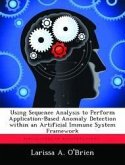Today's predominantly-employed signature-based intrusion detection systems are reactive in nature and storage-limited. Their operation depends upon catching an instance of an intrusion or virus after a potentially successful attack, performing post-mortem analysis on that instance and encoding it into a signature that is stored in its anomaly database. The time required to perform these tasks provides a window of vulnerability to DoD computer systems. Further, because of the current maximum size of an Internet Protocol-based message, the database would have to be able to maintain 25665535 possible signature combinations. In order to tighten this response cycle within storage constraints, this thesis presents an Artificial Immune System-inspired Multiobjective Evolutionary Algorithm intended to measure the vector of tradeoff solutions among detectors with regard to two independent objectives: best classification fitness and optimal hypervolume size. Modeled in the spirit of the human biological immune system and intended to augment DoD network defense systems, our algorithm generates network traffic detectors that are dispersed throughout the network.








